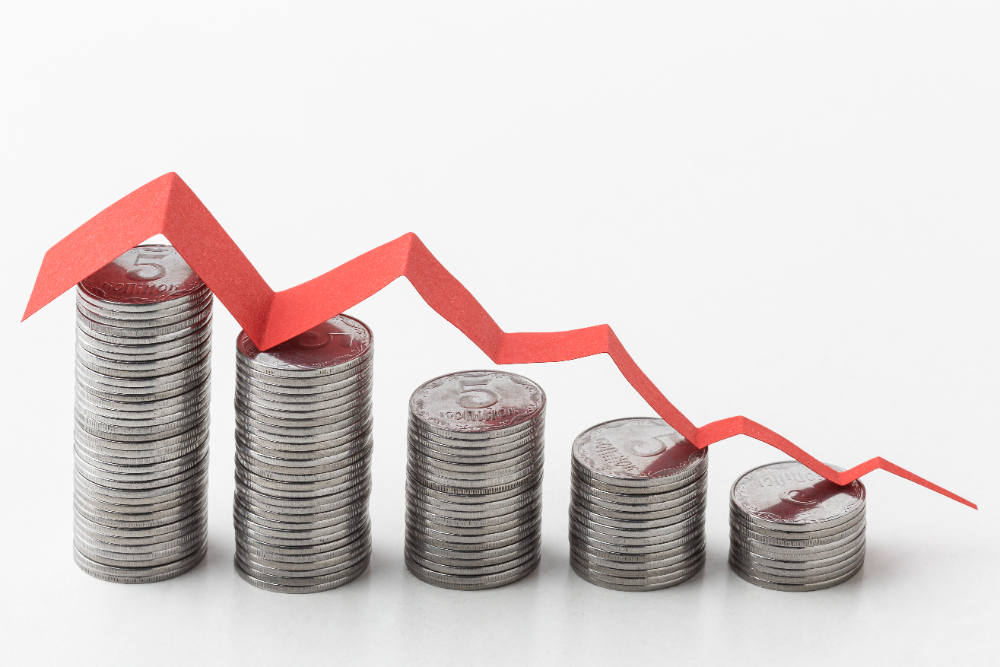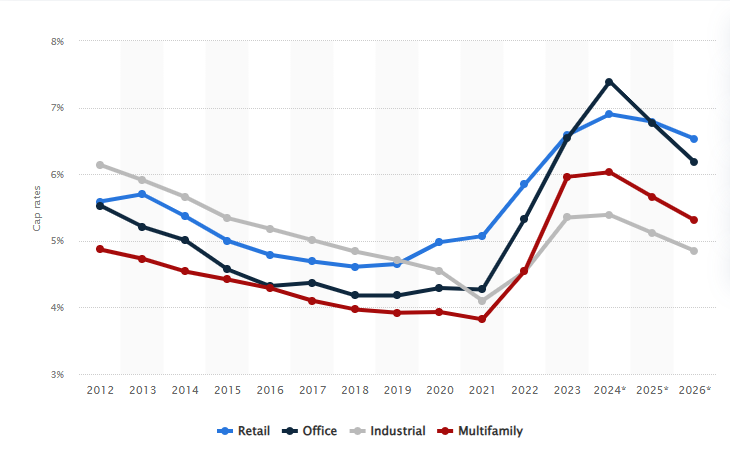Understanding Cap Rates In Multifamily Real Estate
Introduction:
Cap rates, or capitalization rates, are a cornerstone metric in multifamily real estate investing. They provide a snapshot of a property’s potential return on investment and serve as a benchmark for comparing opportunities. This blog delves into what cap rates are, how they’re calculated, the factors influencing them, and their role in investment decisions.
What Is a Cap Rate?
The cap rate represents the relationship between a property’s income and its value. It is expressed as a percentage and reflects the expected annual return if the property were purchased with cash. While straightforward, cap rates are influenced by several factors, including market trends, location, and economic conditions.
Cap rates are often viewed as a measure of risk. Lower cap rates generally indicate lower risk and potentially lower returns, while higher cap rates suggest higher risk but the opportunity for greater returns. This duality makes cap rates a key metric for aligning investments with an investor’s risk tolerance and financial goals.

Cap Rate Calculation
To calculate the cap rate, use the following formula:
Cap Rate = Net Operating Income (NOI) / Property Value
Example:
If a multifamily property generates an NOI of $50,000 annually and is priced at $1,000,000, the cap rate would be: $50,000 / $1,000,000 = 5%
This 5% cap rate indicates that the investor would earn a 5% return annually based on the property’s income.
Cap Rate Interpretation
Understanding cap rates involves analyzing their implications within specific contexts. Here’s a breakdown:
- 3% – 5.5%: Often associated with properties in prime locations, newer buildings, or low-risk investments. These properties typically have stable income streams and high demand.
- 5.5% – 8%: Common in developing areas or older properties. These investments may offer the potential for improvement and value appreciation but come with moderate risk.
- 8% and above: Typically found in less desirable locations or properties requiring significant upgrades. These high cap rates indicate higher risks but also the potential for higher returns.
It’s important to note that a “good” cap rate depends on market conditions and individual investment strategies. For instance, in highly competitive urban markets, investors may accept lower cap rates in exchange for stability and long-term appreciation.
Factors Influencing Cap Rates
Several key factors affect cap rates, shaping their movement in the market:
- Interest Rates: Cap rates often rise with higher interest rates, as borrowing costs increase and property values adjust. Conversely, in a low-interest-rate environment, cap rates may compress as investors are willing to pay more for income-generating assets.
- Rent Growth: Markets with strong rent growth expectations can offset higher borrowing costs and maintain lower cap rates. Properties in areas experiencing robust population growth and economic activity often see stronger rent growth potential.
- Economic Conditions: Positive economic indicators, such as GDP growth and low unemployment, generally lead to lower cap rates due to increased investor confidence. During economic downturns, cap rates tend to rise, reflecting higher perceived risk.
- Location: Properties in stable, high-demand areas typically command lower cap rates due to reduced risk and higher desirability. Conversely, properties in less desirable locations may require higher cap rates to attract investors.
Property Condition and Age: Newer or well-maintained properties with fewer immediate capital needs often justify lower cap rates, while older properties or those requiring significant upgrades might have higher cap rates to account for additional risks.
Historical Trends and Market Insights
Cap rates have historically demonstrated an inverse relationship with property values, influenced by market conditions, economic cycles, and sector-specific factors. For example, during the 2008 financial crisis, cap rates increased significantly, leading to a decline in property values across various real estate sectors. Conversely, periods of economic stability and low interest rates typically compress cap rates, driving up property values.
The chart below highlights cap rate trends for retail, office, industrial, and multifamily sectors from 2012 to 2026 (projected).

Source: Stessa.
This data shows how multifamily properties have maintained lower cap rates compared to retail and office spaces, reflecting their relative stability and strong demand. Industrial properties exhibit resilience and competitive cap rates due to the rise of e-commerce and logistics demand. Meanwhile, retail and office sectors experience higher volatility, impacted by shifting consumer behaviors and work-from-home trends.
Case Study:
Consider Northeast Apartments, a multifamily property with an NOI of $75,000. If cap rates in the area rise from 5% to 6%, the property’s value would drop:
At 5% Cap Rate: $75,000 / 0.05 = $1,500,000
At 6% Cap Rate: $75,000 / 0.06 = $1,250,000
This example illustrates how sensitive property values are to cap rate fluctuations, emphasizing their importance in investment analysis.
When to Use Cap Rates
Cap rates are most useful in the following scenarios:
- Market Comparison: Investors can compare properties in similar markets to identify the best opportunities.
- Risk Assessment: Higher cap rates may indicate higher risk, helping investors evaluate if the potential returns align with their risk tolerance.
- Trend Analysis: Tracking cap rate changes can provide insights into market cycles, helping investors time their entry or exit from investments.
However, cap rates should not be the sole metric for decision-making. A comprehensive analysis should include factors like cash flow, growth potential, and tax implications.
Conclusion
Cap rates are a vital tool for multifamily real estate investors, offering insights into a property’s potential returns, market position, and relative risk. While they provide a quick way to compare investments, cap rates should be analyzed alongside other factors such as market conditions, property quality, and long-term growth prospects.
By understanding the nuances of cap rates and how they interact with broader market dynamics, investors can make informed decisions that align with their financial goals and risk tolerance. Whether you’re seeking stability in prime locations or higher returns in emerging markets, cap rates remain a critical metric in navigating the multifamily real estate landscape.
